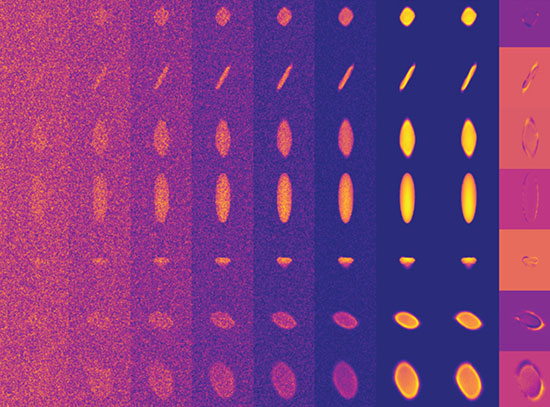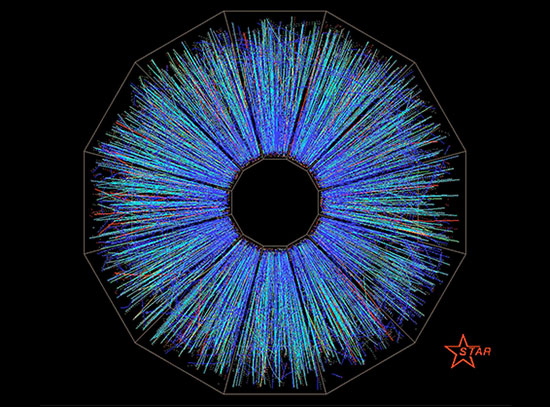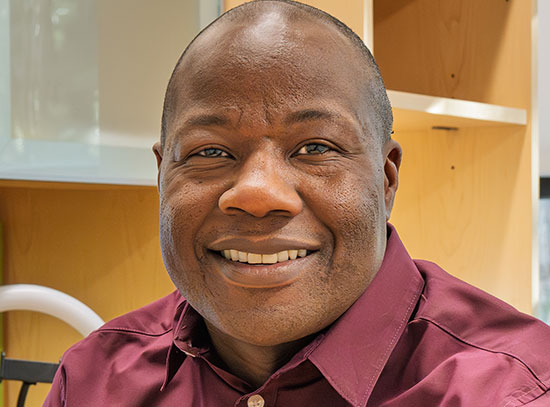U.S. Department of Energy National Quantum Information Science Research Centers Celebrate 4-Year Milestone, Look Toward Future
The five quantum centers have made significant accomplishments, summarized on their new joint website, nqisrc.org.
December 12, 2024
By Hannah Brumbaugh, Monica Hernandez, Leah Hesla, Scott Jones, Danielle Roedel
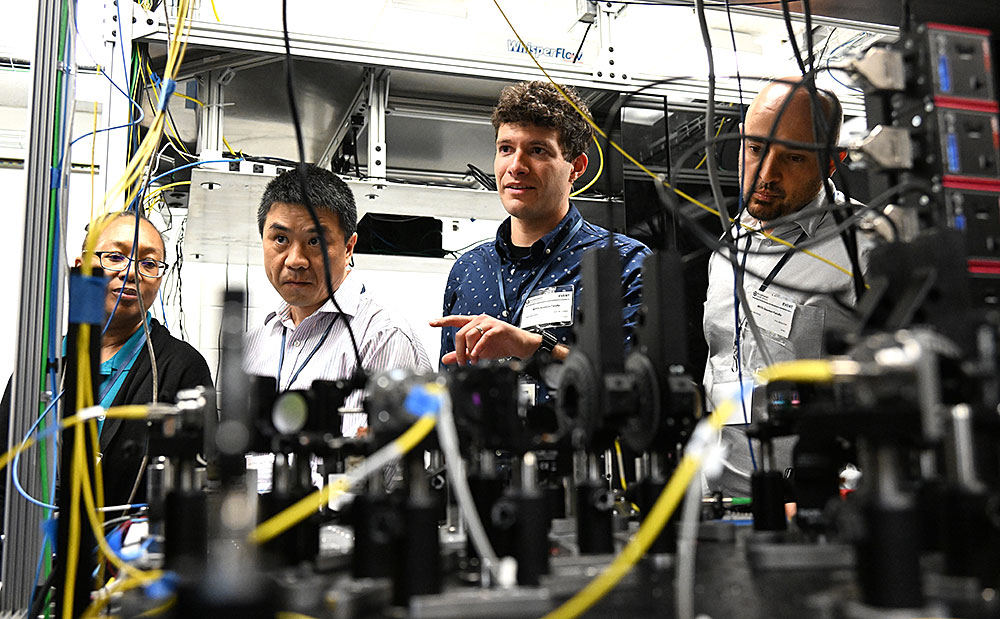 enlarge
enlarge
"The National QIS Research Centers leverage existing talent and expertise from academia, industry and national labs to accelerate QIS breakthroughs that will advance DOE science. Equally important, they are committed to making QIS more accessible to students, early-career researchers and historically underrepresented groups in STEM. Through their outreach initiatives, the centers are ensuring a robust and diverse workforce for future QIS endeavors." — C2QA Director Andrew Houck
Pictured: During the Faculty Outreach for Quantum-Invested UniversitieS (FOQUS) program, participants toured the Quantum Network Facility at Brookhaven Lab. (Credit: Kevin Coughlin/Brookhaven National Laboratory)
Since their establishment in 2020, the five U.S. Department of Energy (DOE) National Quantum Information Science Research Centers (NQISRCs) have been expanding the frontier of what’s possible in quantum computing, communication, sensing and materials in ways that will advance basic science for energy, security, communication and logistics. The centers have strengthened the national quantum information science (QIS) ecosystem, achieving scientific and technological breakthroughs as well as training the next-generation quantum workforce.
Led by a DOE national laboratory, each center comprises a collaborative team spanning a broad range of scientific and engineering disciplines. Bringing together national laboratories, universities and tech companies, the centers have developed into a strong community by creating bridges between the world’s top experts in multiple scientific and technological fields. This further enables researchers to solve major cross-cutting challenges in QIS.
Together, they unite more than 1,500 experts across 115 institutions in North America and Europe. The five centers are:
- Co-design Center for Quantum Advantage (C2QA), led by Brookhaven National Laboratory
- Q-NEXT, led by Argonne National Laboratory
- Quantum Science Center (QSC), led by Oak Ridge National Laboratory
- Quantum Systems Accelerator (QSA), led by Lawrence Berkeley National Laboratory
- Superconducting Quantum Materials and Systems Center (SQMS), led by Fermi National Accelerator Laboratory
In their four years of growth and operation, the NQISRCs have achieved multiple successes in QIS and technology:
- Advanced the fundamental science and understanding of the physics behind quantum devices
- Enhanced quantum devices, the building blocks of quantum computers and sensors, to record performance levels through innovative materials science approaches
- Built and deployed new quantum processors and sensors at DOE national labs, universities and industry partners
- Tailored and designed algorithms to efficiently process data on novel quantum devices while exploring commercial quantum platforms and evaluating the computational capabilities of different hardware at DOE’s quantum testbeds
- Built unique, cutting-edge facilities and instrumentation to characterize, measure, integrate and use quantum devices, processors and sensors
- Trained more than 1,000 students and early-career researchers through summer schools, internships and research experiences at facilities affiliated with the centers
- Launched the U.S. Quantum Information Science Summer School, the first of its kind to facilitate an interconnected quantum ecosystem across academia, national labs and industry to train and grow a quantum-ready workforce
- Connected over 1,600 job seekers with hiring managers from national labs, academia and industry at the virtual Quantum Information Science Career Fair
- Unveiled nqisrc.org, a centralized digital home for the five centers that outlines the NQISRCs’ scientific accomplishments, research developments, workforce opportunities and educational and scientific resources
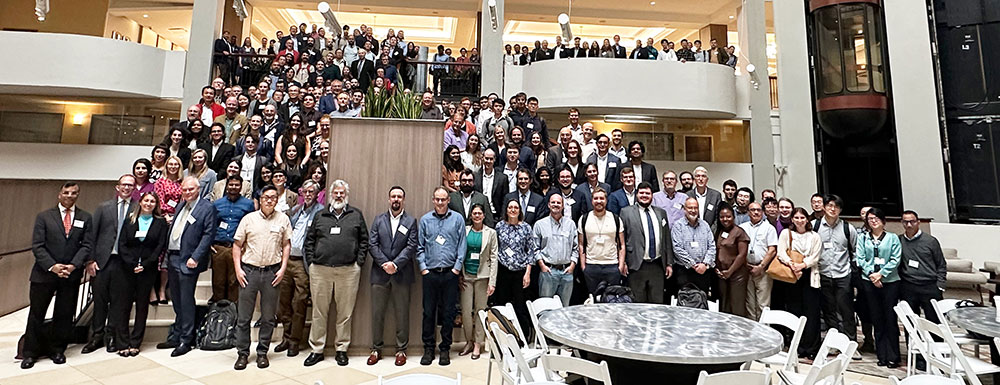
The National Quantum Information Science Research Centers constitute the first large-scale QIS effort that crosses the technical breadth of the U.S. Department of Energy Office of Science. (Credit: Fermi National Accelerator Laboratory)
In fall 2024, 200 experts from the five centers met to review four years of progress and discuss an expanded vision for the future of QIS. The event fostered collaboration and strengthened cross-center partnerships.
By bringing quantum technologies to a broader set of researchers and users, the centers are fulfilling DOE’s mission to advance science for the benefit of society.
The five NQISRCs have grown into a unique and well-connected network of experts and facilities, which together will be critical to advancing the burgeoning field of QIS in the years ahead.
Commenting on the successes of the NQISRCs, the Department of Energy's Deputy Director of Science Programs Harriet Kung said, "As we mark four years of extraordinary progress, the five National Quantum Information Science Research Centers are not only continuing to push the boundaries of quantum information science but are building a robust ecosystem that spans academia, national labs and industry. Their groundbreaking work in quantum computing, sensing, communication and materials is shaping the future of technology, security and workforce development in ways that will benefit society and meet DOE's mission to advance science for the public good.”
The Co-design Center for Quantum Advantage (C2QA) is one of the five National Quantum Information Science Research Centers funded by the U.S. Department of Energy Office of Science. Led by DOE’s Brookhaven National Laboratory, C2QA aims to overcome the limitations of today’s noisy intermediate-scale quantum computer systems by co-designing quantum materials, devices, and software and algorithms. The C2QA team includes more than 350 researchers from national labs, academia, and industry working together to achieve quantum advantage for scientific computations in high energy, nuclear, chemical and condensed matter physics. For more information, visit https://www.bnl.gov/quantumcenter/.
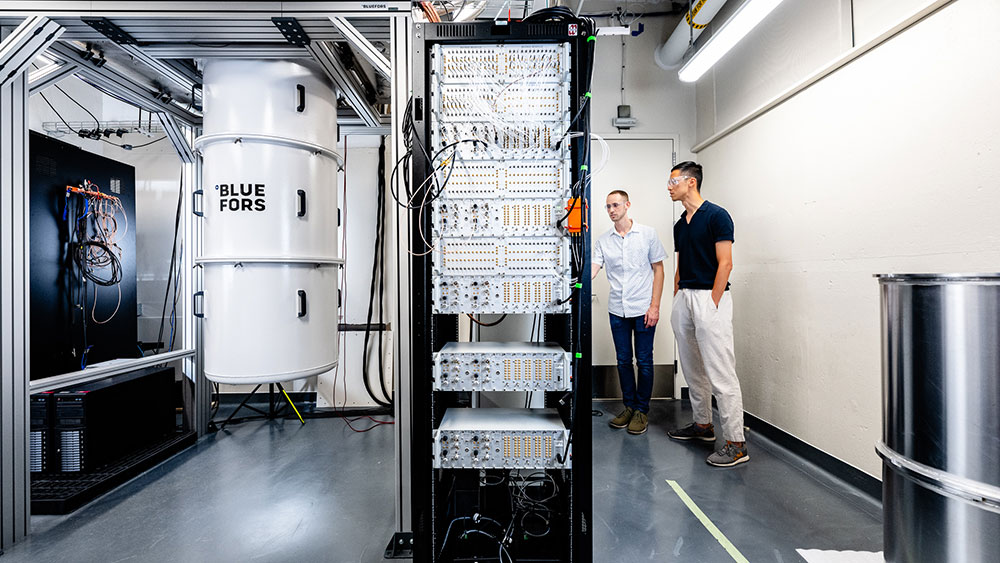 enlarge
enlarge
"The strength of the National QIS Research Centers lies in their center-scale approach, drawing on the capabilities of our national labs, industry partners and university collaborators to drive breakthroughs in quantum information science and to translate them into technologies that will have meaningful, real-world impacts in our everyday lives." — Q-NEXT Director David Awschalom
Pictured: Collaborators work at the quantum computing test bed at the Argonne Quantum Foundry. (Credit: Argonne National Laboratory)
Q-NEXT is a U.S. Department of Energy National Quantum Information Science Research Center led by Argonne National Laboratory. Q-NEXT brings together world-class researchers from national laboratories, universities and U.S. technology companies with the goal of developing the science and technology to control and distribute quantum information. Q-NEXT collaborators and institutions have established two national foundries for quantum materials and devices, develop networks of sensors and secure communications systems, establish simulation and network test beds, and train the next-generation quantum-ready workforce to ensure continued U.S. scientific and economic leadership in this rapidly advancing field. For more information, visit https://q-next.org/.
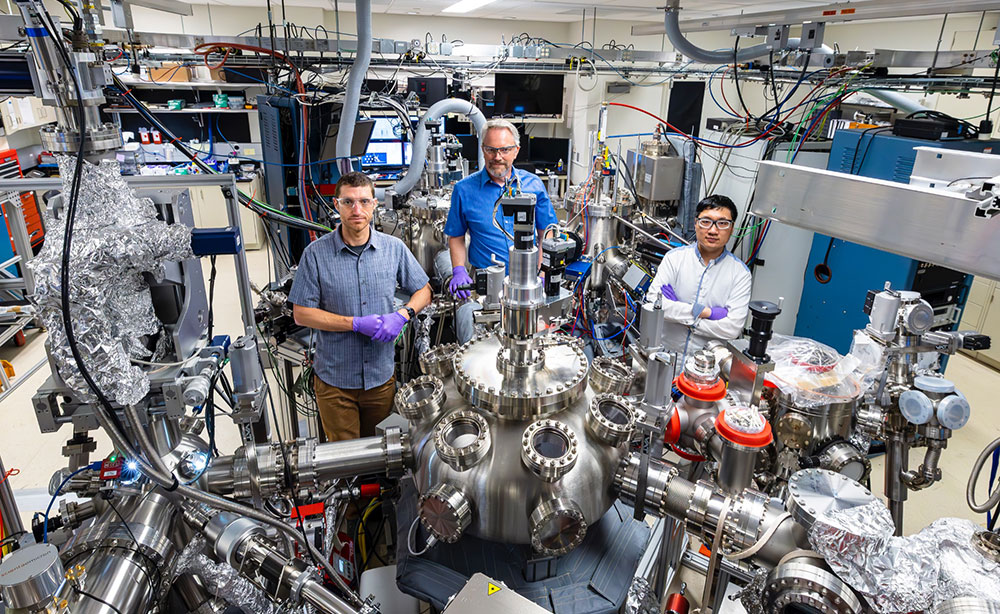
"Our integrated research programs are transitioning fundamental discoveries in materials and computing to new quantum technologies and their applications." — QSC Director Travis Humble
Pictured: The Quantum Thin Film and Characterization Lab at Oak Ridge National Laboratory, where QSC researchers combine molecular beam epitaxy for quantum thin film and heterostructure synthesis with characterization tools to better understand materials at the level of atoms and electrons. This lab is central to the QSC's efforts to develop quantum material platforms for quantum computing and sensing applications. In this image, Matthew Brahlek, Robert Moore and Qiangsheng Lu are developing topological superconducting materials for quantum computing applications in support of the Quantum Science Center headquartered at Oak Ridge National Laboratory." (Credit: Carlos Jones, Oak Ridge National Laboratory)
The QSC, a DOE National Quantum Information Science Research Center led by ORNL, performs cutting-edge research at national laboratories, universities, and industry partners to overcome key roadblocks in quantum state resilience, controllability, and ultimately the scalability of quantum technologies. QSC researchers are designing materials that enable topological quantum computing; implementing new quantum sensors to characterize topological states and detect dark matter; and designing quantum algorithms and simulations to provide a greater understanding of quantum materials, chemistry, and quantum field theories. These innovations enable the QSC to accelerate information processing, explore the previously unmeasurable, and better predict quantum performance across technologies. For more information, visit qscience.org.
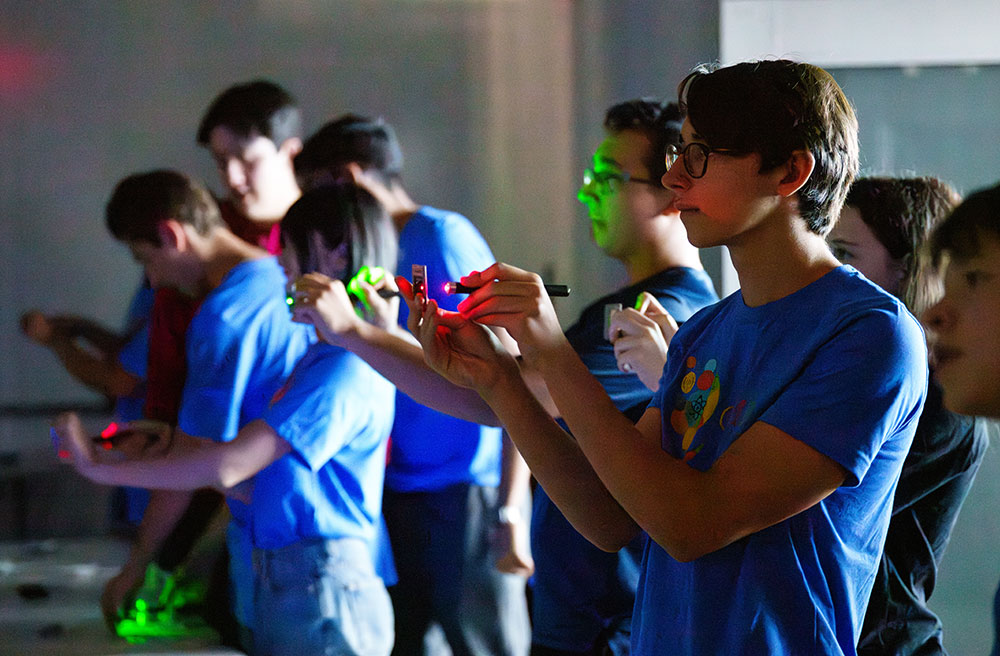 enlarge
enlarge
"The DOE National QIS Research Centers continue to facilitate the transfer of technology, knowledge and skills from national laboratories and universities to the marketplace, working in a coordinated effort to prepare the U.S. workforce and industry to harness quantum computing's potential." — QSA Director Bert de Jong
Pictured: As part of this coordinated effort, the Quantum Systems Accelerator and its partners have expanded summer school programs for high school teachers and students, collaborating to share advancements in QIS. Students replicated the classic Young's double-slit experiment at the 2024 QCaMP in Albuquerque, New Mexico, demonstrating how laser light waves interfere as they pass through two apertures. (Credit: Sandia National Laboratories)
The Quantum Systems Accelerator (QSA) is one of the five National Quantum Information Science Research Centers funded by the U.S. Department of Energy Office of Science. Led by Lawrence Berkeley National Laboratory (Berkeley Lab) and with Sandia National Laboratories as lead partner, QSA catalyzes national leadership in quantum information science to co-design the algorithms, quantum devices, and engineering solutions needed to deliver certified quantum advantage in scientific applications. QSA brings together dozens of scientists who are pioneers of many of today’s unique quantum engineering and fabrication capabilities. In addition to industry and academic partners across the world, 15 institutions are part of QSA: Lawrence Berkeley National Laboratory, Sandia National Laboratories, University of Colorado at Boulder, MIT Lincoln Laboratory, Caltech, Duke University, Harvard University, Massachusetts Institute of Technology, Tufts University, UC Berkeley, University of Maryland, University of New Mexico, University of Southern California, UT Austin, and Canada’s Université de Sherbrooke. For more information, please visit https://quantumsystemsaccelerator.org/.
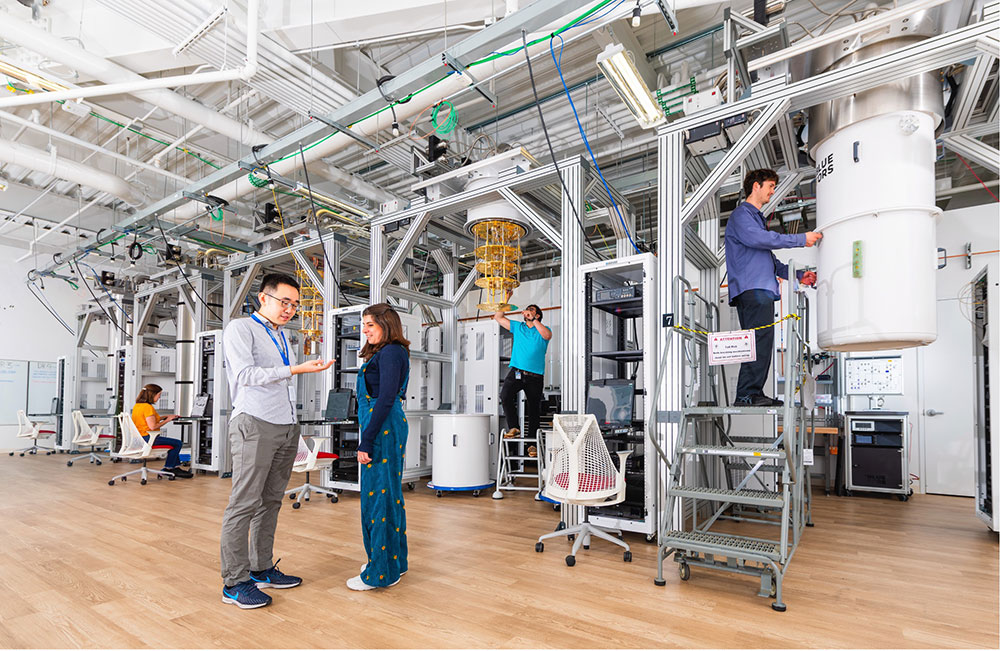 enlarge
enlarge
"The NQISRCs have developed and leveraged world-class quantum research facilities and instrumentation at the DOE national laboratories and across the national QIS ecosystem. By developing and drawing on these resources, the centers connect industry and academic partners with powerful tools found nowhere else in the world, creating bridges across companies, universities and national labs." — SQMS Director Anna Grassellino
Pictured: SQMS Quantum Garage at Fermilab (Credit: Fermi National Accelerator Laboratory)
The Superconducting Quantum Materials and Systems Center at Fermilab is supported by the DOE Office of Science.
The Superconducting Quantum Materials and Systems Center is one of the five U.S. Department of Energy National Quantum Information Science Research Centers. Led by Fermi National Accelerator Laboratory, SQMS is a collaboration of more than 30 partner institutions — national labs, academia and industry — working together to bring transformational advances in the field of quantum information science. The center leverages Fermilab’s expertise in building complex particle accelerators to engineer multiqubit quantum processor platforms based on state-of-the-art qubits and superconducting technologies. Working hand in hand with embedded industry partners, SQMS will build a quantum computer and new quantum sensors at Fermilab, which will open unprecedented computational opportunities. For more information, please visit sqmscenter.fnal.gov.
Brookhaven National Laboratory is supported by the Office of Science of the U.S. Department of Energy. The Office of Science is the single largest supporter of basic research in the physical sciences in the United States and is working to address some of the most pressing challenges of our time. For more information, visit science.energy.gov.
Follow @BrookhavenLab on social media. Find us on Instagram, LinkedIn, X, and Facebook.
2024-22218 | INT/EXT | Newsroom





